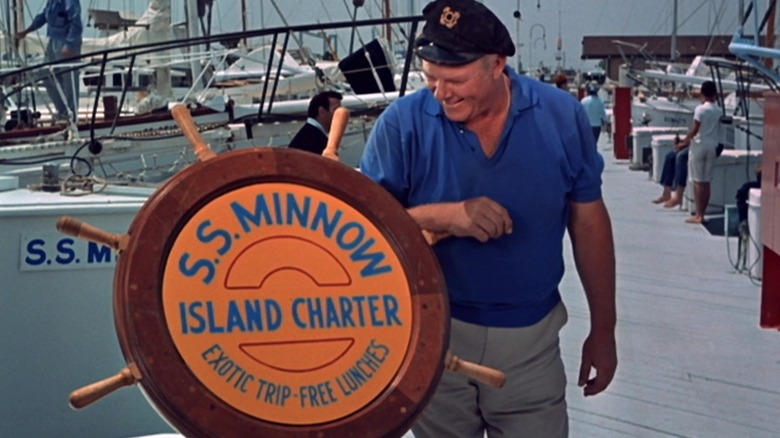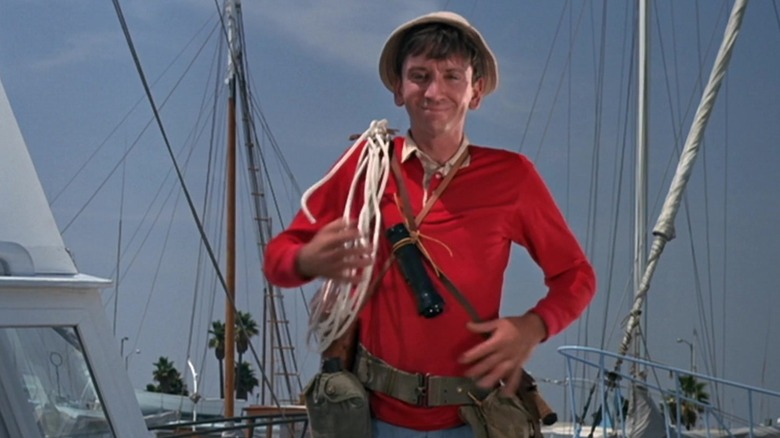
A fun bit of trivia: when “Gilligan’s Island” was at the height of its popularity, sometime in 1965 show creator Sherwood Schwartz received a visit from one Commander Doyle of the United States Coast Guard. Evidently, the Commander was getting a lot of (jokey) telegrams from his officers, asking why a more concerted effort hadn’t been made to locate and rescue Gilligan and his fellow castaways. This story was confirmed in a 1967 interview with the Sioux City Journal, handily transcribed by MeTV.
“Gilligan’s Island,” as TV history buffs may know, was a smashing success in its first two seasons, gathering as much attention from audiences as it did scorn from critics. Many saw “Gilligan’s Island” as being too fluffy and frivolous, lacking any discernible edge. The series took place in a colorful cartoon world where there was no death or pain or real-world threats. The seven stranded castaways on Gilligan’s Island never faced starvation, a lack of resources, or madness. Everyone pretty much got along, and their clothes were always clean. The physical and moral cleanliness of “Gilligan’s Island” may have robbed it of any sense of true drama or peril, but it was the most attractive detail for viewers. The worst plight the castaways faced was boredom, and if you’re looking for more like it, we have plenty of recommendations.
Schwartz also revealed in that interview that “Gilligan’s Island” was of particular interest to kids. He received a lot of fan mail from younger viewers, saying that they loved the show. Parents didn’t mind, because there was nothing wholly objectionable about the series; it was a bloodless and sexless show, easily consumed by first-graders. He did reveal, however, that he got one angry letter from the father of a young “Gilligan’s Island” fan who, much to the father’s consternation, liked the show a little too much. Indeed, he complained that his daughter refused to answer to her own name, and instead wanted to be called Gilligan’s Island.
A nine-year-old girl insister her father call her Gilligan’s Island
Schwartz’s usual reaction from kids and parents was easy and gentle, and usually quite positive. He said:
“[Kids] don’t have anything particular to say about the show, just that they love it. […] Parents write, too, though. They are glad their kids like it because they say there’s no sex or violence.”
But the angriest letter was from the father of the girl who wanted to be called Gilligan’s Island. No, she didn’t want to be called Gilligan. Nor Mary Ann, the Skipper, the Professor, or Ginger. She wanted to be called Gilligan’s Island. Surely, that’s a sign. If that little girl was 9 in 1965, she’d be 70 now. I wonder where she is and if she still loves Schwartz’s show. Sadly, Schwartz doesn’t know how that saga played out. If there is a person out there who legally changed their name to “Gilligan’s Island,” though, I would hazard to guess it’s the same person.
Schwartz deliberately invented the seven castaways to be simple, knowing that it’s easier to determine favorites among cartoonish characters. It’s also easier to write for larger-than-life people, and definitely easier for little kids to pick out their favorites. As Schwartz put it:
“Granted, my characters are broad, but I have six types whose patterns of social behavior make them react to type regardless of where they are. […] The Skipper is the physical brute, then there’s the rich man and his wife, the glamour girl, the intellectual and the country girl. Gilligan, of course, is the innocent.”
Schwartz himself admitted that “Gilligan’s Island” wasn’t a work of genius; he even admitted in 1965 that Gilligan certainly wasn’t “the greatest thing since the wheel.” But he could definitely take pride in the show’s overwhelming success. The studio once wanted to fire him, but now it’s 2025, and we’re still talking about his show. He must have done something right.



Leave a Reply